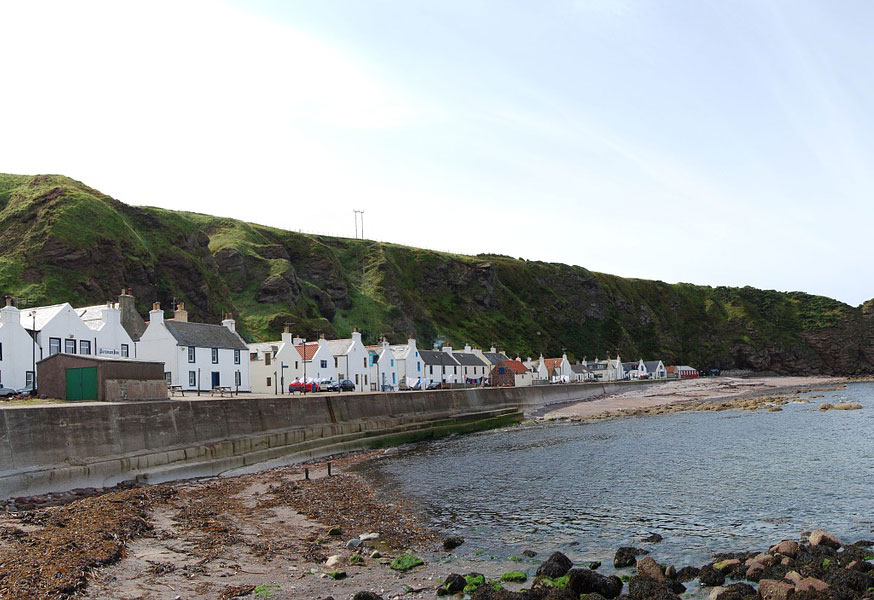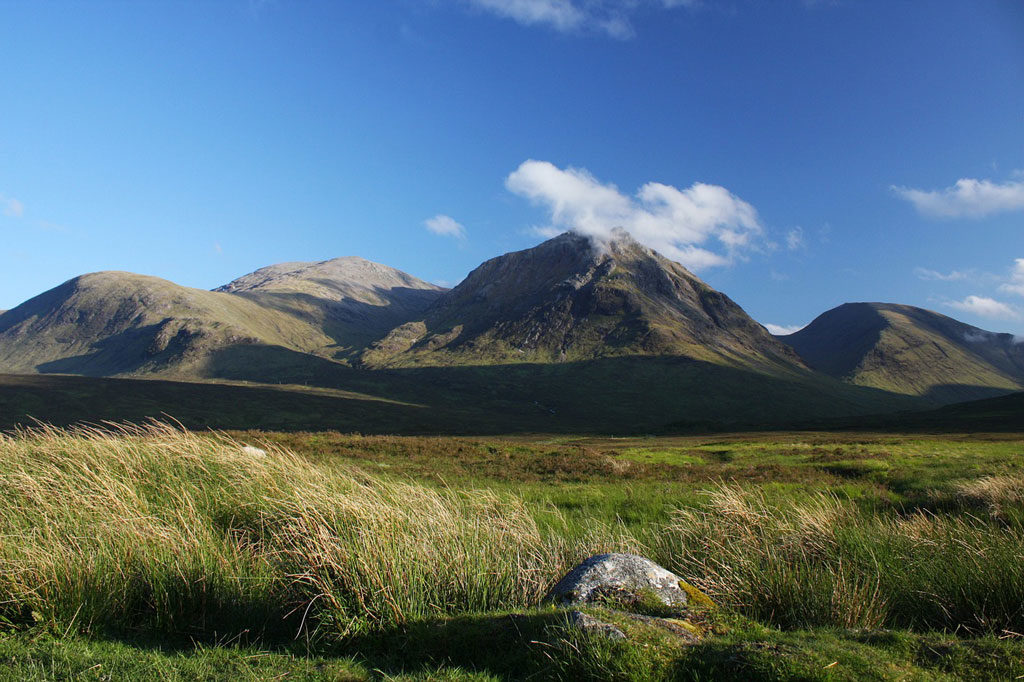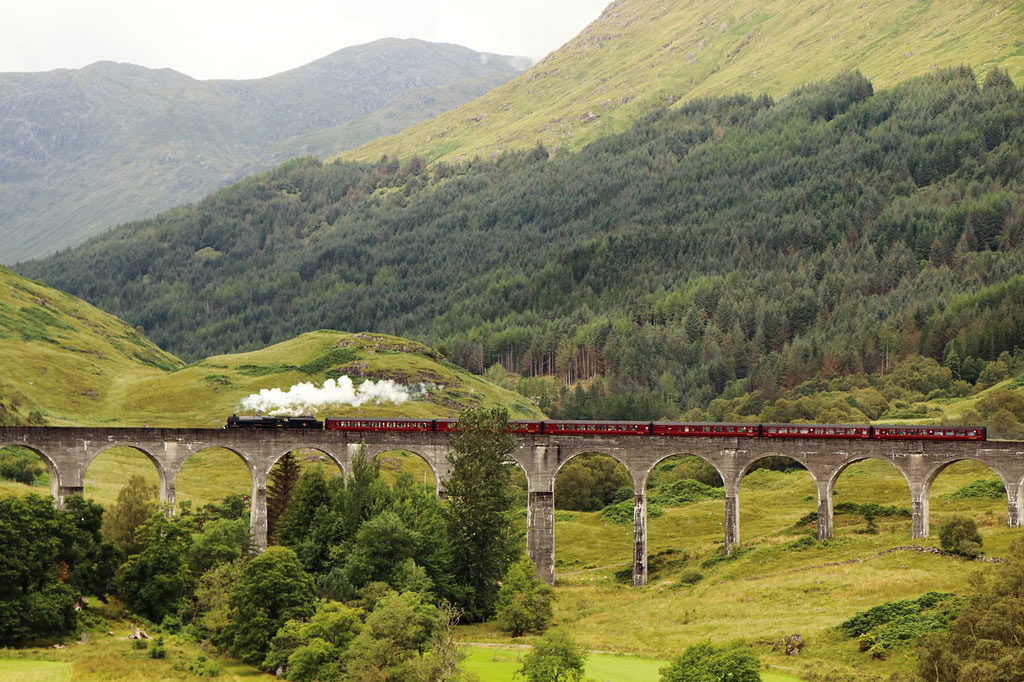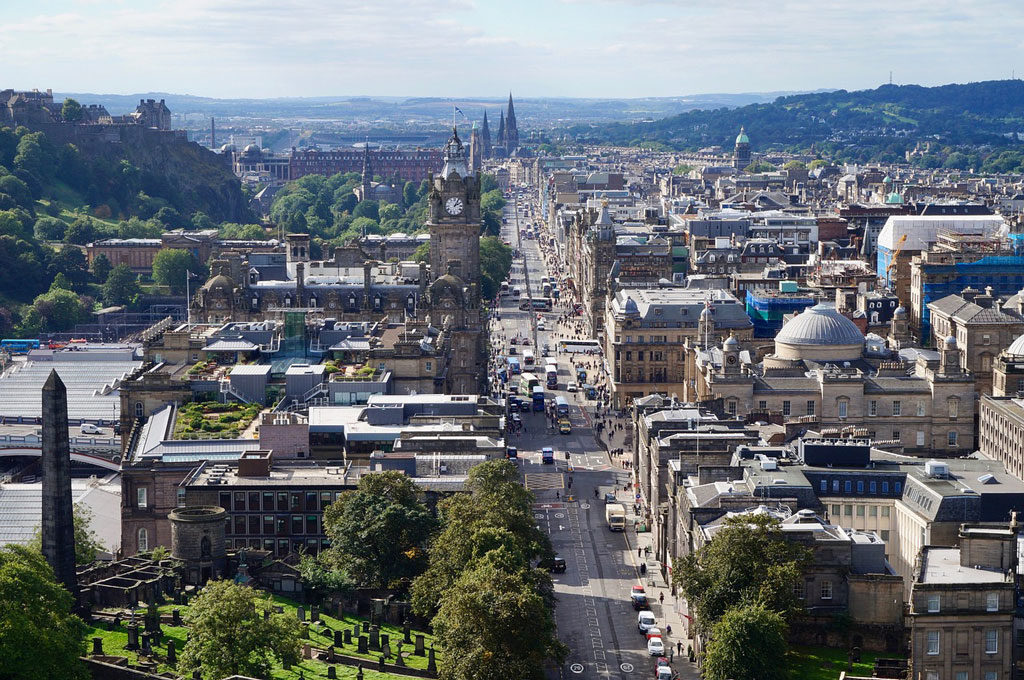Get behind the scenes on the real set to fully appreciate the drama of Scottish scenery, says Susan Nickalls.
MORE FROM SCOTLAND MAGAZINE
With its breathtaking natural scenery and romantic castles, Scotland has provided a spectacular backdrop for many films, and these film locations in turn have attracted tourists from all over the world
Films are big business nowadays, not just at the box office, but at the tourist office. Given the fantastical quality inherent in films, it isn’t surprising that an increasing number of people want to visit the locations to experience for themselves something of this magical dream world.
The ‘Braveheart factor’, as VisitScotland calls it, contributes between £15m and £20m ($24m and $32m) a year to the Scottish economy.
But even before Braveheart, Scotland was on the film-making map with classics such as Hitchcock’s 1935 version of The 39 Steps with its dramatic shots of the Forth Rail Bridge and Compton Mackenzie’s 1949 comic masterpiece Whisky Galore!, which transformed the island of Barra into a whisky-lover’s paradise.
Hollywood created its own take on Scotland in Gene Kelly’s 1954 musical Brigadoon without shooting a frame of film outside America. However, the romantic tartan and heather image was a powerful one, and although Brigadoon has since been eclipsed by Braveheart, there are still some tourists that come in search of this contrived chocolate-box nirvana.

While these films generated a steady trickle of interest in Scotland, it was Bill Forsyth’s 1983 film Local Hero, starring Burt Lancaster, that really captured the imagination of tourists, particularly Americans, who arrived in their droves to see the fictitious village of Ferness. Supposedly on the west coast of Scotland, Ferness was in fact miles away, in Pennan on the east coast. The quiet Aberdeenshire village quickly became inundated with people keen to see the famous red telephone kiosk by the harbour, while the glittering expanse of golden sand at Camusdarrach Beach, Morar, on the west coast also became a must-see destination.
But none of this could compare with the sudden explosion of interest in everything Scottish following the Hollywood blockbuster hits of 1995: Rob Roy and Braveheart.

Rob Roy, starring Liam Neeson, told the story of the infamous outlaw Rob Roy McGregor and was shot in various west Highland locations including Rannoch Moor, Glen Coe and Glen Nevis.
Some of these were also used in Braveheart, with 14th century Lanark recreated in Glen Nevis. With its native Caledonian pines, this area is a popular one with period productions as there are no telltale signs of 21st-century living, such as modern forestry, pylons and wind farms.
But while Glen Nevis may boast magnificent mountains and glens, it also has the less dubious distinction of having the highest rainfall figures in Scotland.
During the filming of Braveheart, the crew experienced an unusually dry spell and had to resort to watering the artificial hillock they’d built to hide their equipment, much to the amusement of the locals.
Braveheart went on to win five Oscars, and director and star of the film, Mel Gibson, could not have foreseen the influence this film would have on numerous aspects of Scottish life. Eight years on, the ‘Braveheart factor’ shows no signs of waning.
A year after the film’s release, a survey revealed that one in five American tourists chose Scotland as a holiday destination after watching Braveheart. Visitor numbers at the Glen Nevis car park rose dramatically, as did those to the Wallace Monument in Stirling.
This interest has continued with VisitScotland estimating that Braveheart still accounts for between 70 and 80 per cent of people making a visit to the monument. The top of the monument offers stunning panoramas across the surrounding countryside, including Bannockburn where Wallace battled for Scottish independence.
A large number of Australians continue to visit Scotland on the back of Braveheart, no doubt as a result of Gibson’s involvement.
The film also had wider implications, such as inspiring a complete review of Scotland’s film industry, which prompted the establishment of the Scottish Screen film agency, and an increase in support for the Scottish National Party. This demand for greater independence led to Scotland securing its own parliament in 1999.
As the west Highlands is one of the busiest places for filmmakers, the Fort William and Lochaber tourist office have produced a special leaflet detailing film and television locations in their area.
In addition to Braveheart and Rob Roy, these include Highlander I and III , Lars van Trier’s Breaking the Waves, Monty Python and the Holy Grail, Kidnapped, Bonnie Prince Charlie and most of the Harry Potter films, the most recognisable scene possibly being the railway line over the Glenfinnan Viaduct.

Various sets were built in the Glen Coe area, including the entrance to Hogwarts, Hagrid’s hut and part of the secret forest, giving a boost to the local economy of around £3m ($4.8m). The film also made the headlines when sparks from the ‘Hogwarts Express’ steam train caused a fire that destroyed 100 acres of heathland around the viaduct in 2003.
Fort William and Lochaber is just next door to Badenoch and Strathspey, better known as ‘Monarch of the Glen Country’. This popular television series has sold to 30 countries including America, Canada, Australia and New Zealand.
As a result, tourists from all over the world are making a beeline for this area to experience the natural beauty of Loch Laggan which is overlooked by Ardverikie house (aka Glenbogle), the Cairngorms, Lochs Morlich and Garten, and the town of Kingussie.
Another television series, 2000 Acres of Sky, put the spotlight on Dumfries and Galloway. This quiet backwater of Scotland has been popular with film-buffs ever since the 1974 film The Wicker Man acquired cult status. Subsequent interest is stronger than ever with a Wicker Man music festival and conference at Dumfries University. Set on Summerisle, the film took advantage of the area’s dramatic coastline which has island-like qualities.
This aspect of Dumfries and Galloway was what attracted the makers of 2000 Acres of Sky, who used Port Logan on the mainland as the fictitious island of Ronansay.

But then, Scotland is well-used to pretending to be somewhere else. Fans of Bollywood movies should watch for Scottish locations, as the country is a favourite with producers for the light and greenness of the scenery.
The island of Harris became the planet Jupiter in Stanley Kubrick’s 2001: A Space Odyssey, Glasgow’s City Chambers were used as the Vatican in Heavenly Pursuits, and other landmarks in the city recreated early 20th Century New York in The House of Mirth, starring X-Files actress Gillian Anderson.
The relatively unaltered Old Town and Georgian parts of Edinburgh are frequently used as London settings in period dramas such as Daniel Deronda, Mary Reilly and Jude.
Scotland’s capital also attracted tourists in the wake of Trainspotting, not so much to see the housing estates in Leith, but to explore other aspects of the city.
Edinburgh features again in the film Young Adam, based on the controversial cult novel by Alexander Trocchi. It stars Ewan McGregor, Tilda Swinton and Peter Mullen, and features the Union Canal and Forth and Clyde Canal and other locations in the central belt.
Read more:
The Road Dance: An interview with Will Fletcher and John Mackay
Edinburgh: A tale of two cities
The best Highland games in Scotland this summer
MORE FROM SCOTLAND MAGAZINE

SCOTLAND MAGAZINE
Published six times a year, every issue of Scotland showcases its stunning landscapes and natural beauty, and delves deep into Scottish history. From mysterious clans and famous Scots (both past and present), to the hidden histories of the country’s greatest castles and houses, Scotland‘s pages brim with the soul and secrets of the country.
Scotland magazine captures the spirit of this wild and wonderful nation, explores its history and heritage and recommends great places to visit, so you feel at home here, wherever you are in the world.